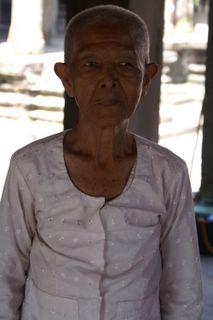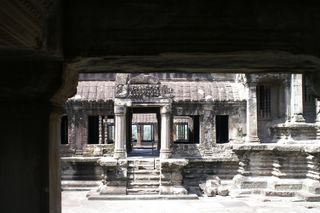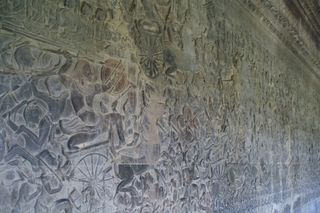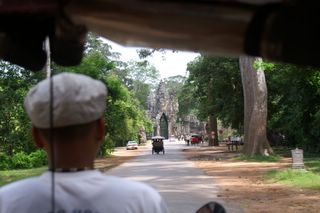Finally, this Cambodian matriarch really took me by surprise. Luckily, I was still walking and talking with Aeang, who speaks Khmer. This lovely lady stopped me to shake my hand and make a few gestures. Turned out she asked me to take her photo. She said (through Aeang) that she lost all of her photos in the "unpleasantness", a euphamism for Pol Pot's Khmer Rouge regime in the 1970s, when his charge to genocide killed over a million and a half of his own countrymen. All locals working to restore Ankor Wat, a relative newcomer to the archaelogical restoration effort, and all monks who worshipped here, were killed. Now, I could be naive, but this lady certainly has the testament of time and survivorship on her side. I didn't want to discourage her from the moment, and didn't have the nerve to reposition her in a place that allowed for more sunlight on the subject. But I felt honored that she asked me to take the photo. I am to mail it to her "when it gets developed", but she was quite happy to see the immediate digital display.











